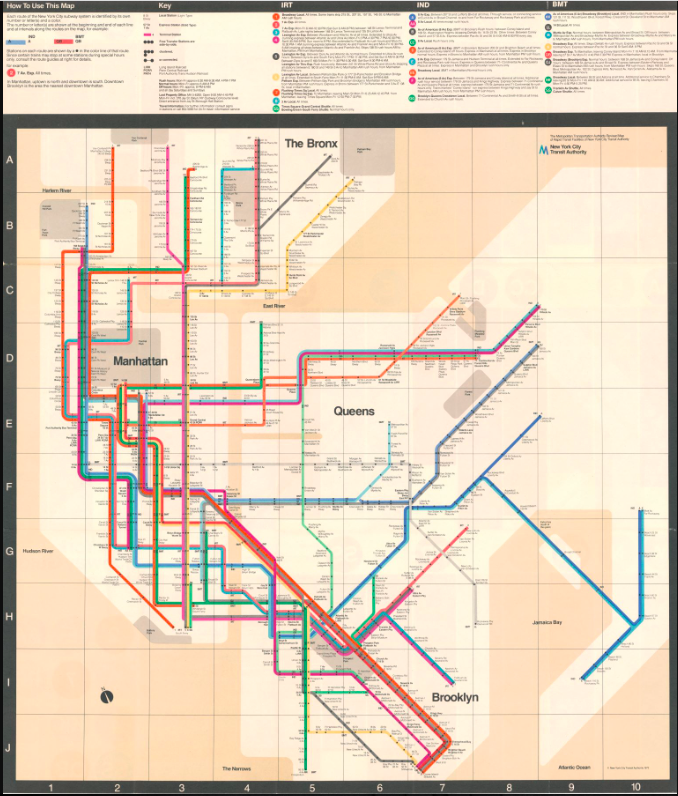MTA Celebrates 50th Anniversary of Streamlined, Bolder Vignelli Subway Map

The Transit Museum is celebrating the introduction of the 1972 “Vignelli Map” of the city’s subway
From brooklyneagle.com
Every once in a while, MTA New York City Transit, and its predecessor, the NYC Transit Authority, have changed its subway map around, trying to create a map that can make the city’s complicated subway system easier for straphangers to understand.
This year is the 50th anniversary of a colorful, diagrammatic map of the subway system, introduced by the Transit Authority and Unimark International, that’s commonly referred to as the Vignelli Map. The underground Transit Museum at Schermerhorn Street in Downtown Brooklyn is hosting an exhibit on the Vignelli Map, both inside the museum itself and online.